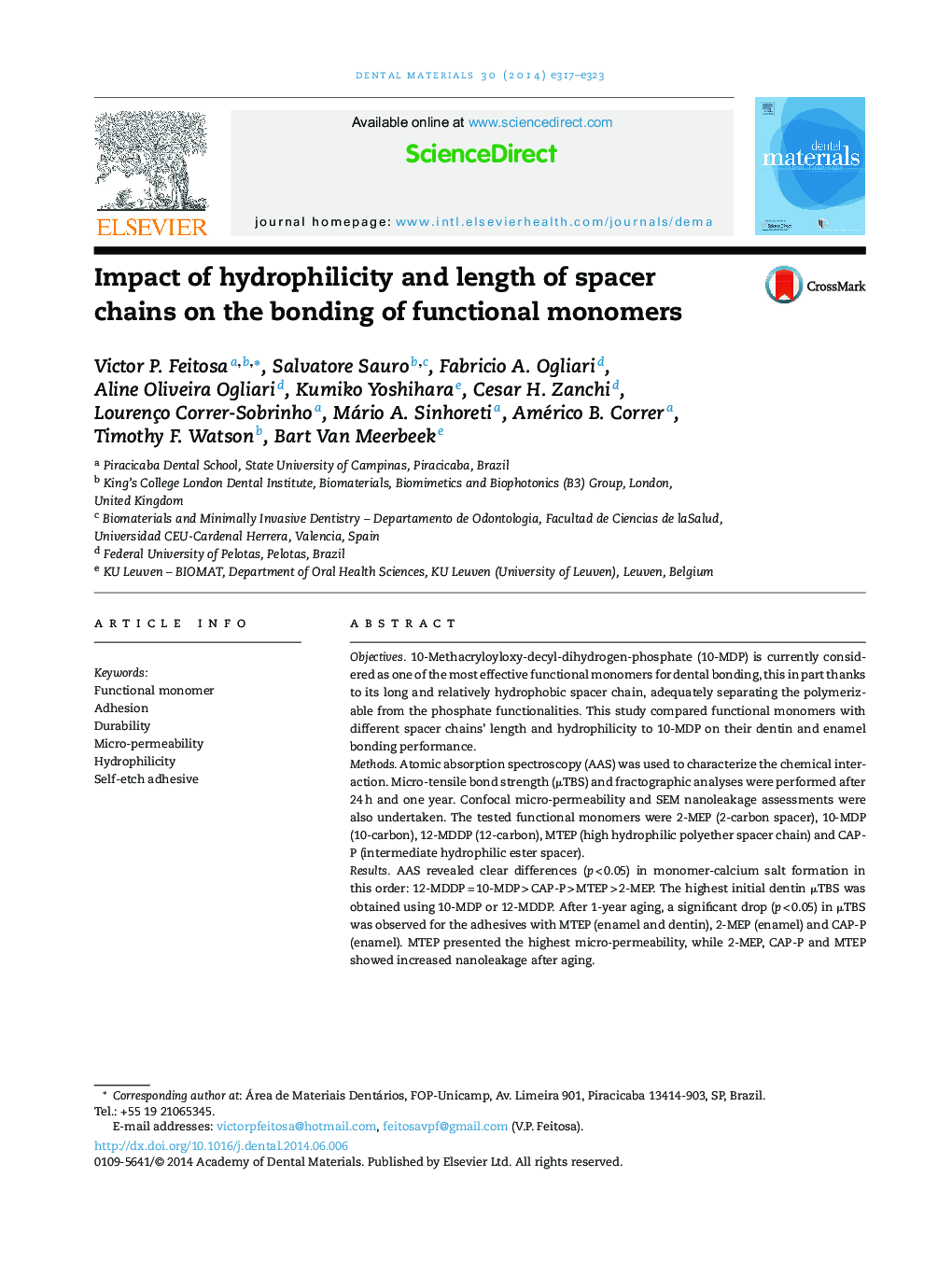| Article ID | Journal | Published Year | Pages | File Type |
|---|---|---|---|---|
| 1420478 | Dental Materials | 2014 | 7 Pages |
Objectives10-Methacryloyloxy-decyl-dihydrogen-phosphate (10-MDP) is currently considered as one of the most effective functional monomers for dental bonding, this in part thanks to its long and relatively hydrophobic spacer chain, adequately separating the polymerizable from the phosphate functionalities. This study compared functional monomers with different spacer chains’ length and hydrophilicity to 10-MDP on their dentin and enamel bonding performance.MethodsAtomic absorption spectroscopy (AAS) was used to characterize the chemical interaction. Micro-tensile bond strength (μTBS) and fractographic analyses were performed after 24 h and one year. Confocal micro-permeability and SEM nanoleakage assessments were also undertaken. The tested functional monomers were 2-MEP (2-carbon spacer), 10-MDP (10-carbon), 12-MDDP (12-carbon), MTEP (high hydrophilic polyether spacer chain) and CAP-P (intermediate hydrophilic ester spacer).ResultsAAS revealed clear differences (p < 0.05) in monomer-calcium salt formation in this order: 12-MDDP = 10-MDP > CAP-P > MTEP > 2-MEP. The highest initial dentin μTBS was obtained using 10-MDP or 12-MDDP. After 1-year aging, a significant drop (p < 0.05) in μTBS was observed for the adhesives with MTEP (enamel and dentin), 2-MEP (enamel) and CAP-P (enamel). MTEP presented the highest micro-permeability, while 2-MEP, CAP-P and MTEP showed increased nanoleakage after aging.SignificanceThese outcomes showed that more hydrophilic and shorter spacer chains may compromise the chemical interaction with calcium and the dentin/enamel bonding performance.
